TRAVEL IN WINTER
After Yellowstone closes for the season in November, preparations begin for the opening of over snow travel on the interior roads in December. Yellowstone’s winter travel season lasts for about three months, and the only way to access the interior is by foot, on a guided snowcoach or snowmobile tour, or a limited private snowmobile lottery. The road from Gardiner to Cooke City, Montana is open year round to regular vehicle travel as well.
As I don’t offer tours by way of snowmobile, this article will focus on what you can expect on a snowcoach trip or a vehicle trip to the northern range.
WEATHER
The average temperature during the day ranges from 0F to 20F, with below zero temperatures possible at night (the record low is -66F in West Yellowstone). Some days may include wind as well, making the temperatures feel even colder. The weather can range from heavy snow and wind to beautiful blue skies and a “warm” day.
Traveling via snowcoach is a comfortable experience, and offers a place of escape from the harsh weather outside. As long as you’re properly dressed for the weather, it should be a fun experience! Click here for a suggested winter gear checklist.
WHAT YOU’LL SEE (SNOWCOACH)
Madison River: The first 14 miles after leaving West Yellowstone will be along the Madison River. This area commonly has bison, elk, bald eagles, and coyotes. The prize opportunity on this stretch would be seeing one of the famous Madison River bobcats. They are most likely to be seen in January, but you never know with wildlife. I’ve missed seeing it myself on any of my previous snowcoach trips.

Geyser Basins: Between the Madison River and Old Faithful lie many different thermal features, gathered into “basins” with access via boardwalks. The hot steam rising from the hot springs and geysers creates a thick frost on the surrounding landscape.
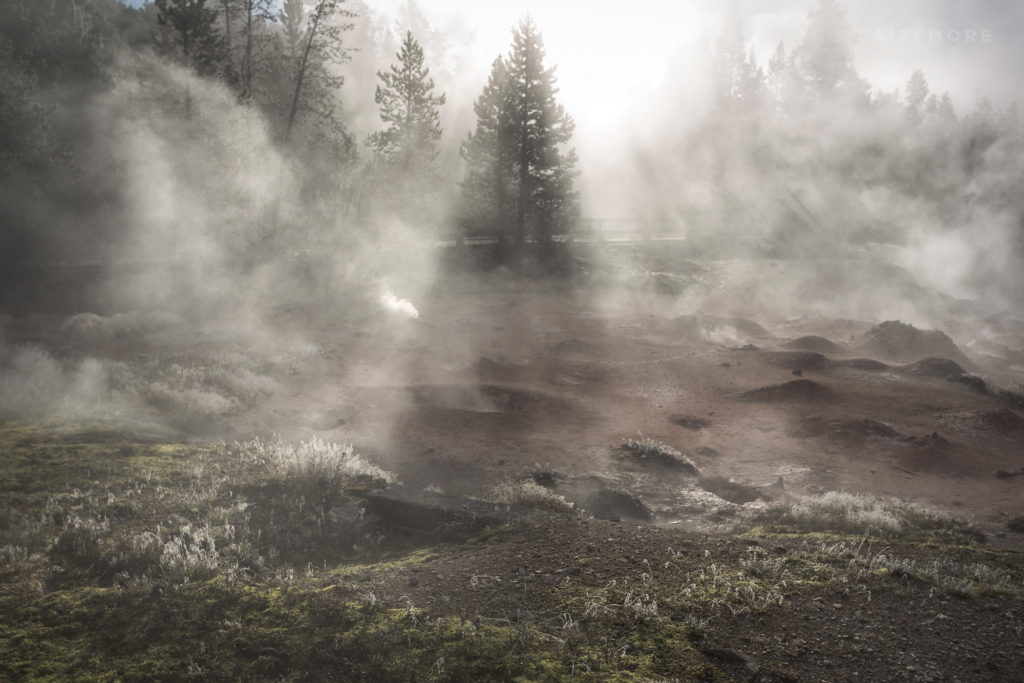
Wildlife can be seen near the road anywhere in the park.
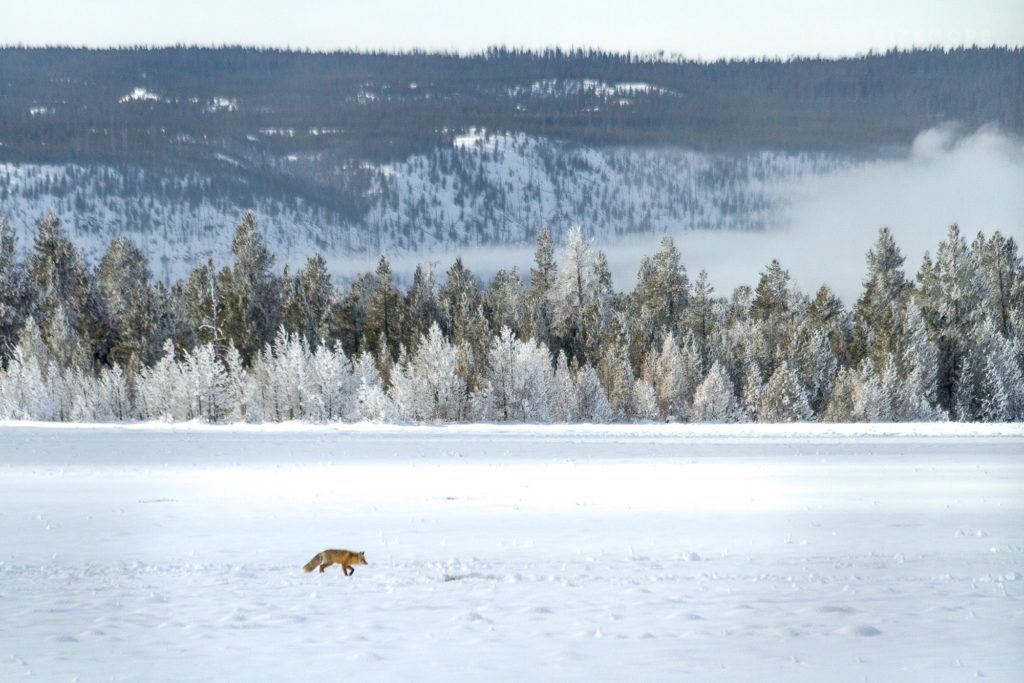
Old Faithful (upper geyser basin): Even if you’ve seen Old Faithful in the summer, it’s worth seeing again in the winter. The entire landscape is different, and it’s easy to find quiet among the snow.

Canyon (waterfalls): The elevation and topography at Canyon lends itself to receiving above average snowfall. Through the winter, snow builds up around the lower falls as the water gradually approaches a complete freeze.
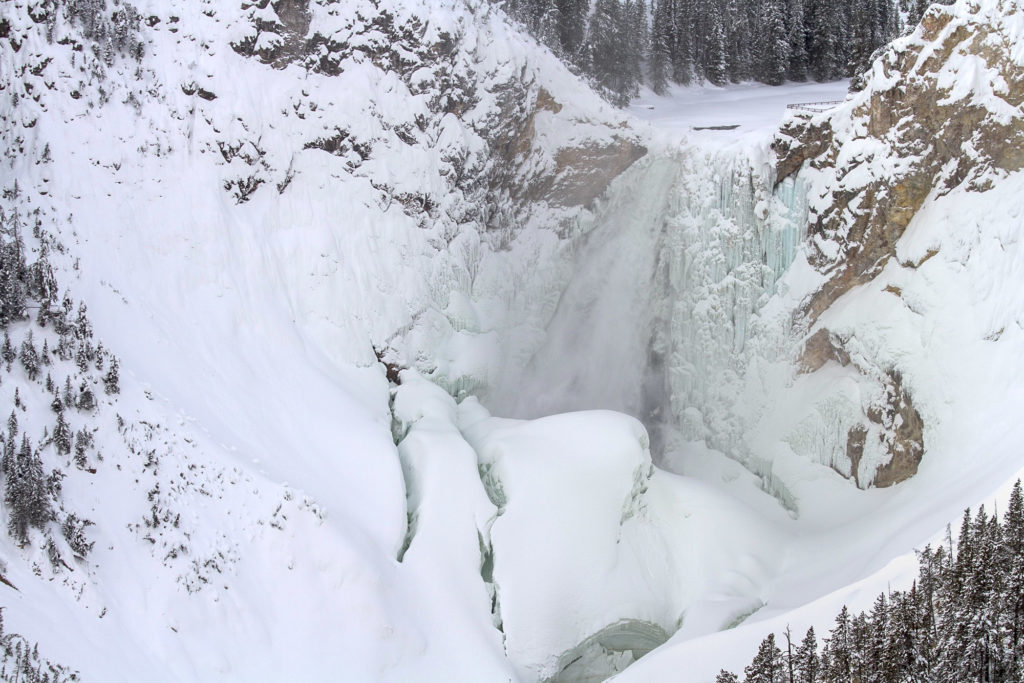
WHAT YOU’LL SEE (NORTHERN RANGE)
Mammoth Hot Springs: The terraces at Mammoth Hot Springs are great to see either in the middle of a day trip, or just before the sun sets for a dramatic otherworldly scene.
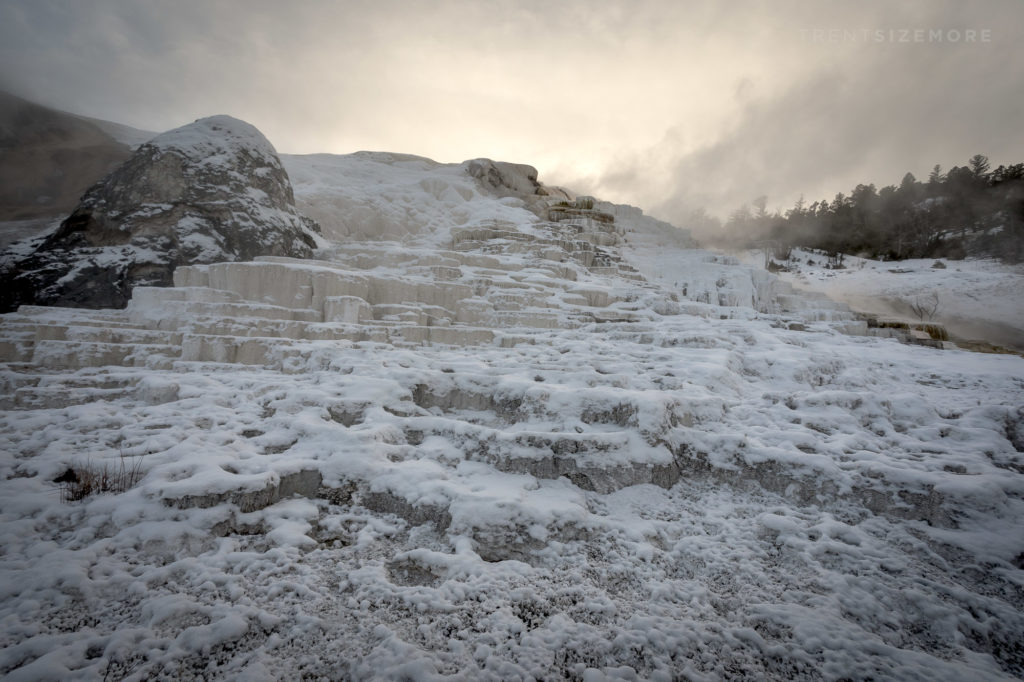
Lamar Valley: The area from Mammoth to Cooke City (including Lamar Valley) is a wildlife hot spot in the winter. It’s possible to see wolves, foxes, and coyotes as they become easier to spot on a white snow background. Bison and elk are common through the winter as well. Moose and otters are possible as well, but less common.

Even though winter days are shorter than summer, the low angle of the sun helps create great light that lasts longer throughout the day. Between golden light, steam, and possible snow, you’ll have the opportunity to create really unique images.
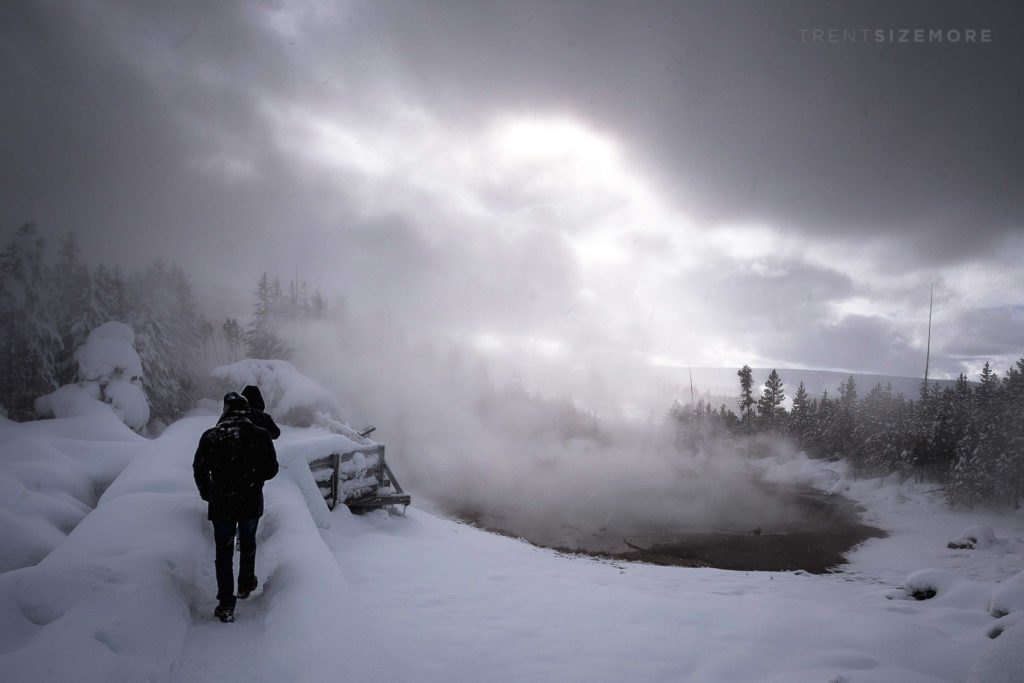
[text-blocks id=”4129″]

